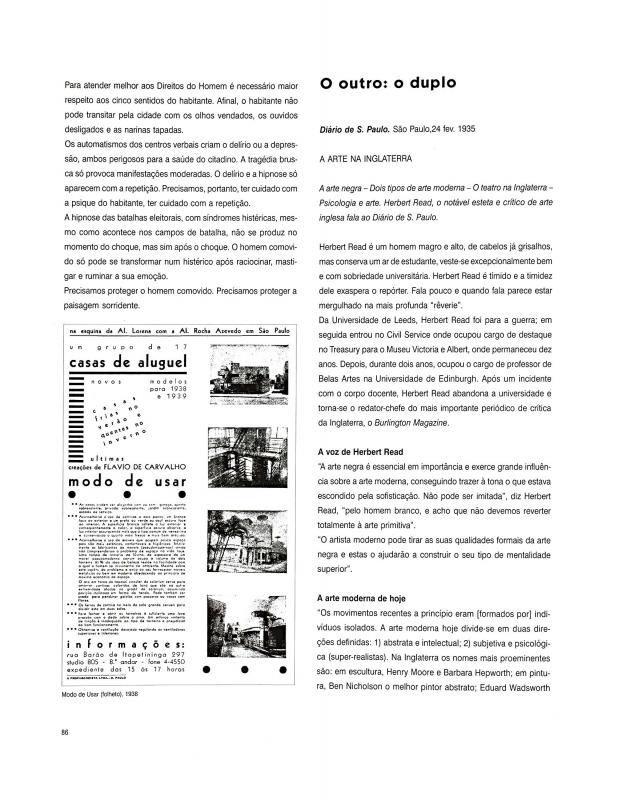The Franco-Romanian poet Tristan Tzara (1896–1963) experimented with various forms of writing, including poetry, essays, plays, art criticism, musical composition, film, and performance. He was a pivotal figure in the Dadaist movement ever since it was started at the Cabaret Voltaire in Zürich, Switzerland.
This document reflects the interest expressed by the Brazilian artist Flávio de Carvalho (1899–1973) in Surrealism, Futurism, and modernism. It is one of the testimonies he collected during his trip to Europe in 1934, when he interviewed famous people who were involved with these movements, such as Man Ray, Tristan Tzara, Herbert Read (see doc. no. 1110385), Roger Callois, and Tommaso Filippo Marinetti. The following year, de Carvalho published the results of his project in the São Paulo newspaper, Diário de S. Paulo. It should be noted, however, that de Carvalho’s interviews were recorded in the 1930s, on his second trip to Europe, when he was intellectually more mature and was meeting key people in the historical avant-gardes. He first went to Europe to study in London and Paris from 1910 to 1922.
In a predominantly figurative and nationalist milieu, Flávio de Carvalho (1899–1973) is one of the few Brazilian artists to express certain affinities with Dadaism and Surrealism. In addition to being a painter, he was also prone to provocative acts, such as his 1930 Experiência n.2, when he put on a broad-brimmed hat and paraded against the flow of a Catholic procession in downtown São Paulo. By destabilizing the social and moral status quo, he hoped to provoke situations that created emotional tension and social instability in order to study the resulting psychological reactions and the behavior of the masses when faced with a crisis.

